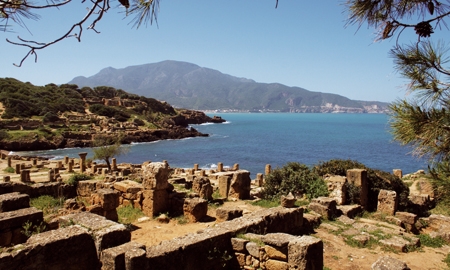
Perhaps it is in the nation’s cuisine that this is most evident. When the Carthaginians introduced semolina wheat over 2,000 years ago, the native Berbers created couscous – now Algeria’s signature dish. The Muslim Arabs arrived in the 600s, bringing with them the exotic flavours of saffron, ginger, cloves, nutmeg and cinnamon from the Spice Islands.
The 16th century saw the arrival from Spain of olives, oranges, plums and peaches. Around the same time the Ottomans introduced Algerians to sweet pastries. With the invasion of the French, leavened loaves of bread and sidewalk cafes – still plentiful in urban areas – first made their appearance. Tea, yet another staple in the modern Algerian diet, was a European contribution, although coffee flavoured with cardamom is also a popular option.
Another noteworthy aspect of Algerian culture is its handicrafts. Craft is considered a vital local industry, and the Ministry of Tourism and Handicraft nurtures the production of a vast array of copperware, jewellery, rugs, pottery, instruments, leatherwork, basketry and ceramics – all perfect as souvenirs.
“Handicraft portrays our cultural references, civilisation and identity, and is also perceived by the government as a niche of economic activity,” says Smail Mimoune, Minister of Tourism and Handicrafts.
0 COMMENTS